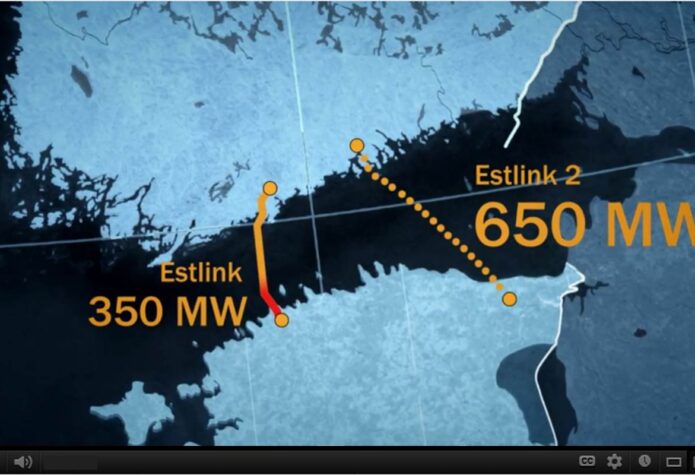Estlink a step towards Baltic energy ring

A new high-voltage interconnection, Estlink-2, between Estonia and Finland is expected to give a strong impetus to the development of the North European electricity market.
EU members since 2004, the Baltic countries are still not part of the European electricity distribution network. The Baltic grids built in Soviet times tie these countries to Russia, making them dependent on a single source of power import and vulnerable from the security of supply point of view.
“Estlink-1 is currently the only power link between the Baltic energy system and the Nordic electricity network. This link works at its full capacity of 350 MW,” says Jukka Ruusunen, CEO of Finland’s power network operator Fingrid Oyj.
According to the present plan, Fingrid and its Estonian counterpart Elering AS will take over Estlink-1 from its current operator in 2013. These two companies are at the moment building the second high-voltage electricity transmission interconnection between Estonia and Finland, Estlink-2. According to Mr Ruusunen, the construction is proceeding on schedule and is expected to be completed in 2014. NIB has lent EUR 118 million for both Estlink projects over the past seven years.
“With the new link in place, the capacity of interconnection between Finland and Estonia will triple and become comparable to the capacity of the power links between Finland and Russia,” explains Mr Ruusunen.
The expanded capacity is significant from both the Finnish and Estonian point of view, and there are no plans for building any additional capacity across the Gulf of Finland, at least in the coming ten years.
“As a transmission system operator, Fingrid aims at removing congestion in power links between Finland and the neighbouring countries. Our business incentive is based on creating free flow of energy between the markets, not on maximising profit from congestion and collecting the difference of energy prices at the ends of an interconnection, which is the case with the so-called merchant line operators,” says Mr Ruusunen.
The increased capacity will also add to equalising the prices on the electricity markets in Finland and Estonia and, potentially, the other two Baltic countries. Estlink-1 has facilitated Estonia’s integration into Nord Pool Spot, the Nordic multinational exchange for trading electricity.
“Estonia is now part of the Nordic market and has harmonised its market regulation with the one adopted in the Nordic countries. Latvia and Lithuania are moving in the same direction,” says Mr Ruusunen.
“The impact of joining the Nord Pool Spot is very significant for Estonia, as the national energy producer can now compete with its Nordic peers and invest at the same price level. In practice this development has so far affected only Estonia and, to some extent, Finland, since the sizes of the markets are very different. Speaking of the whole Nord Pool, it is a matter of 25 terawatt-hours of some 400,” Mr Ruusunen continues.
He predicts that the situation will change with Estlink-2 and, at a later stage, a new interconnection between Lithuania and Sweden coming into use. The new links will enable Nordic and Baltic electricity producers to sell electricity on a significantly bigger market.
“It will be a common Baltic Sea market. An energy ring around the Baltic Sea will have a great effect on energy trade in the Nord Pool and between it and neighbouring countries-Russia most of all, which operates power links with the Baltic countries and will thus be able to export and import even more energy to and from Northern Europe,” Mr Ruusunen explains.
After the decommissioning of the nuclear plant in Lithuania and with the planned closure of some obsolete power generation units in Estonia in sight, the existing and future links will also guarantee the security of energy supply for both the Baltic countries, which are currently cut off from the rest of the EU.
The interconnections will decrease the dependence of the Baltic countries on a single source power supply, be it internal or the import from Russia.
“Two-thirds of Russian electricity export goes via the Baltic Sea region. There are a number of unsolved energy issues between the EU and Russia that affect, first of all, our region. I think the EU-Russia electricity-related dialogue should take place here,” says Mr Ruusunen.
“All in all, the interconnections between the Baltic and the Nordic countries will have three major impacts: they will support the development of the market in the Baltic Sea area, strengthen the security of supply, and bring the Baltic countries closer to the EU market,” concludes Mr Ruusunen.
